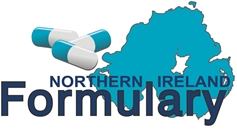Dry eye syndrome is a common chronic condition characterised by inflammation of the ocular surface and reduction in quality and/or quantity of tears. Dry eye syndrome is usually categorised into either aqueous or evaporative tear deficiency but clinically these often overlap and co-exist.
- Evaporative tear deficiency (most common form) — increased tear film evaporation often due to a deficient lipid layer in the tear film.
- Aqueous tear deficiency — reduced aqueous secretion from lacrimal glands.
Further details on the aetiology of dry eye can be found here.
General advice on managing dry eyes and blepharitis
The Patient Information Leaflets (PILs) on Dry Eyes and Blepharitis provide advice on the need for regular long term treatment to manage blepharitis and advice on modifiable risk factors to reduce tear evaporation including:
- Education on the chronic nature of dry eye and the need for ongoing treatment
- environmental factors / low humidity
- regular lid hygiene
- limiting contact lens wear
- medication – symptoms of dry eye can be due to medications such as retinoids, topical ophthalmic medications (especially those containing preservatives, in particular, benzalkonium chloride), oral contraceptives, antihistamines, beta-blockers, anticholinergics, and some psychotropics
- diet – some studies suggest that increasing omega-3 and reducing omega-6 in your diet may improve symptoms for people with dry eye. Omega-3 supplements are not recommended on HSC prescription
Artificial Tear Replacement
*use of phosphates in eye drops
Consider preservative-free (PF) formulations for patients with:
- Preservative allergy
- Contact lenses wearers
- Long term treatment (over 3 months) or frequency >4 times daily
If a preservative-free product is needed, use a licensed product and ensure a ‘special’ is not inadvertently selected.
Management notes:
- The majority of patients in primary care can be managed with first line agents.
- All tear supplements should be given in conjunction with advice on modifiable risk factors.
- Products should be tried for 4-6 weeks before assessing benefit.
- Hypromellose is the traditional choice of treatment for tear deficiency. It may need to be instilled frequently for adequate relief.
- Products containing carbomers require less frequent administration but may be less well tolerated
- Transient blurring can be a problem with more viscous drops
- Contact lens wearers should be encouraged to attend their prescribing optometrist
- Consider use of a drop aid device to aid self-instillation of drops. They are particularly useful for the elderly, visually impaired, people with arthritis or otherwise physically limited patients. When recommending eye drop dispensers, it is important to ensure that the eye drops and eye drop dispenser recommended are compatible.
- Eye drop dispensers allowable on HSC prescription:
- Opticare – for 2.5, 5, 10, 15 and 20mL bottles
- Opticare Arthro 5 – for 2.5 and 5mL bottles
- Opticare Arthro 10 – for 10, 15 and 20mL bottles
- ComplEye – for Hylo eye drop bottle range
- EyGuide – for the EY range and Novelia bottles
- Consider treating exacerbating or related factors, e.g. rosacea
- Whilst rare and usually associated with an underlying condition, severe complications of dry eye disease can be sight threatening. Consider early referral if patients have:
- an associated autoimmune disease
- severe or persistent symptoms
- Some patients may benefit from the use of an eye ointment at night. Review to assess benefit after 4-6 weeks. Eye ointments may be uncomfortable and blur vision, so they should generally only be used at night and never with contact lenses or when driving or operating machinery.
- Ciclosporin eye drops (Ikervis®) is accepted as an option for treating severe keratitis in adult patients with dry eye disease that has not improved despite treatment with tear substitutes. See NICE TA369
Further information:
- For further details on dry eye syndrome including details on diagnosis and when to consider referral see CKS Dry eye Disease
- The Royal College of Ophthalmologists have produced general principles on Ophthalmic Special Order Products
- Sometimes ‘specials’ are inadvertently selected from GP clinical systems. Please ensure a transcription error has not occurred
Patient information
- HSC Patient Information Leaflets on Managing Managing dry eyes and Blepharitis
- The College of Optometrists website https://lookafteryoureyes.org was created for members of the public who are interested in their eyes and eye health.
